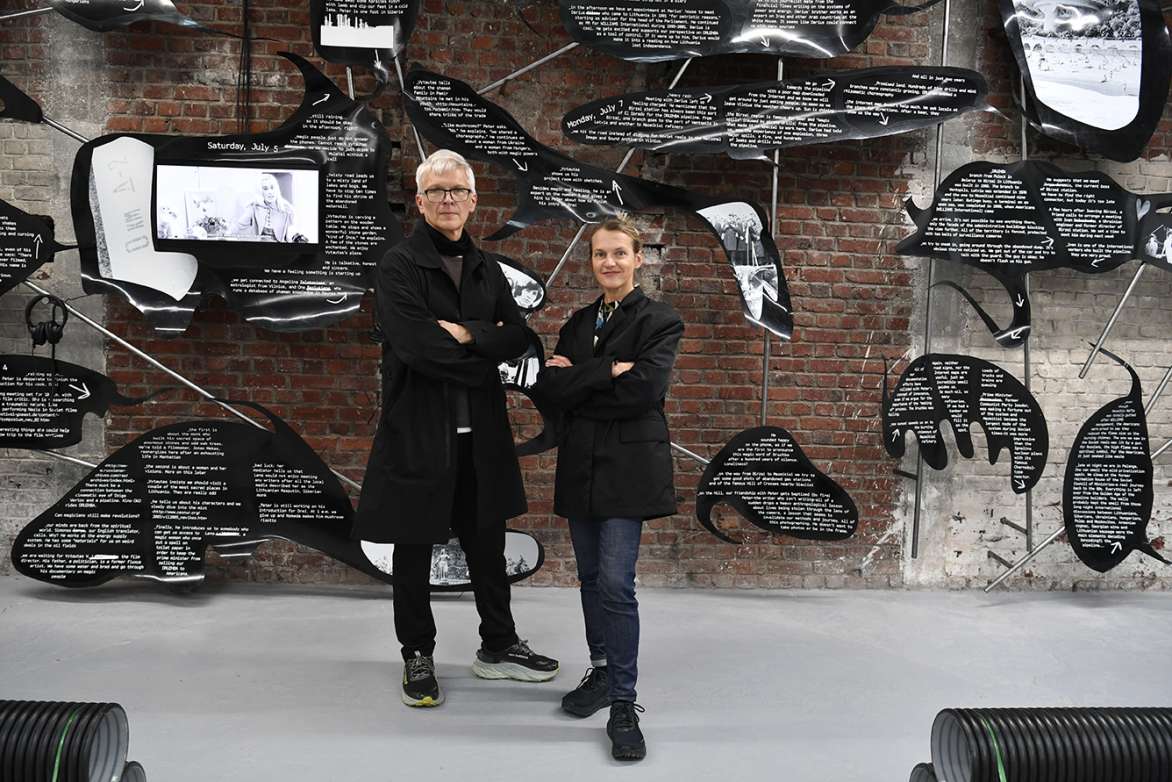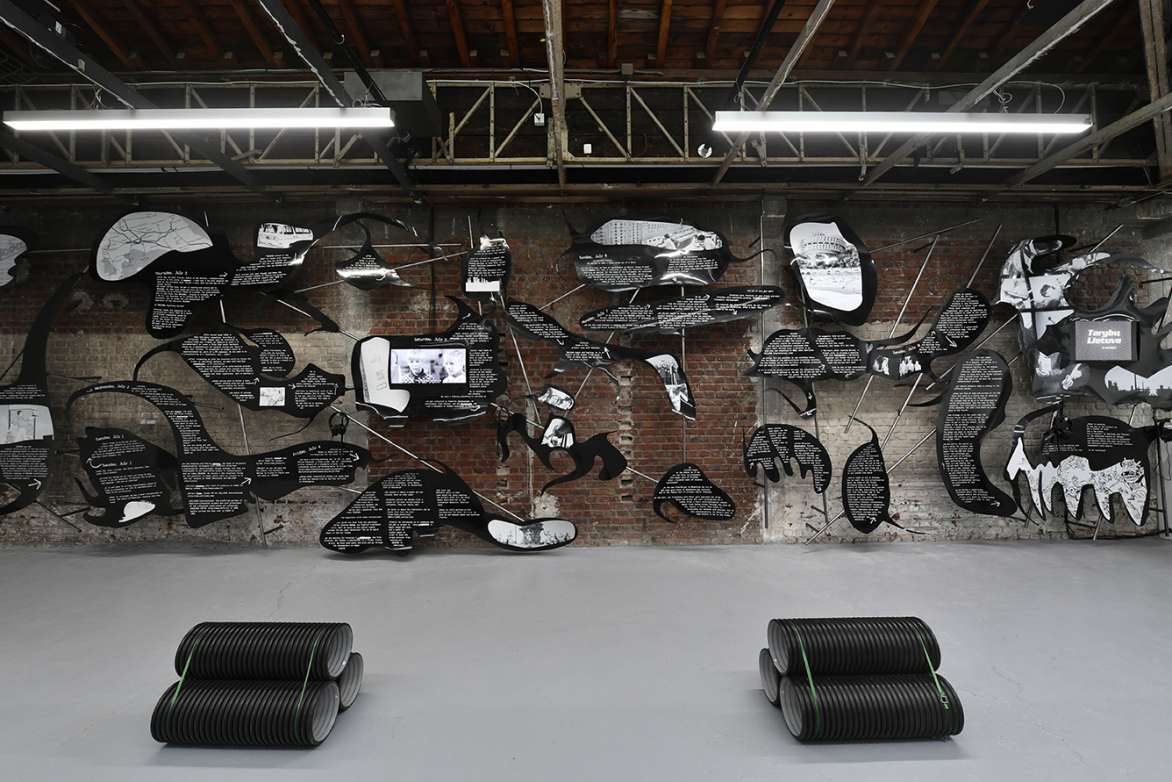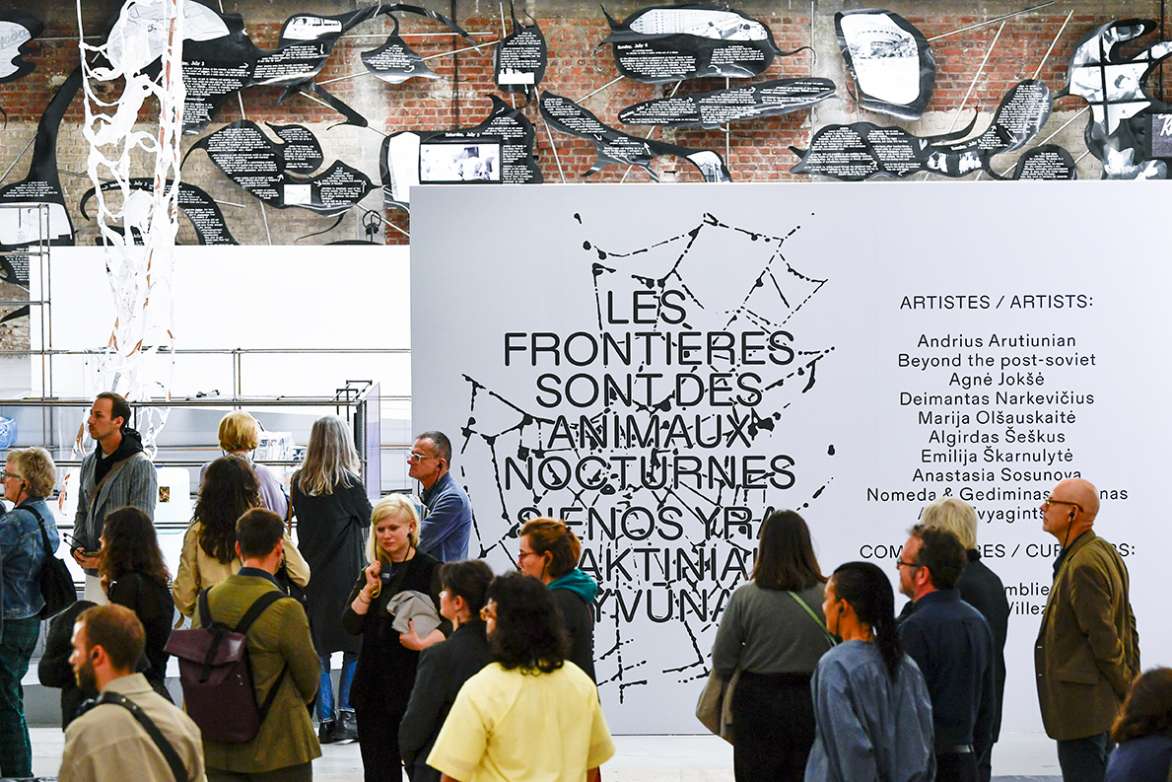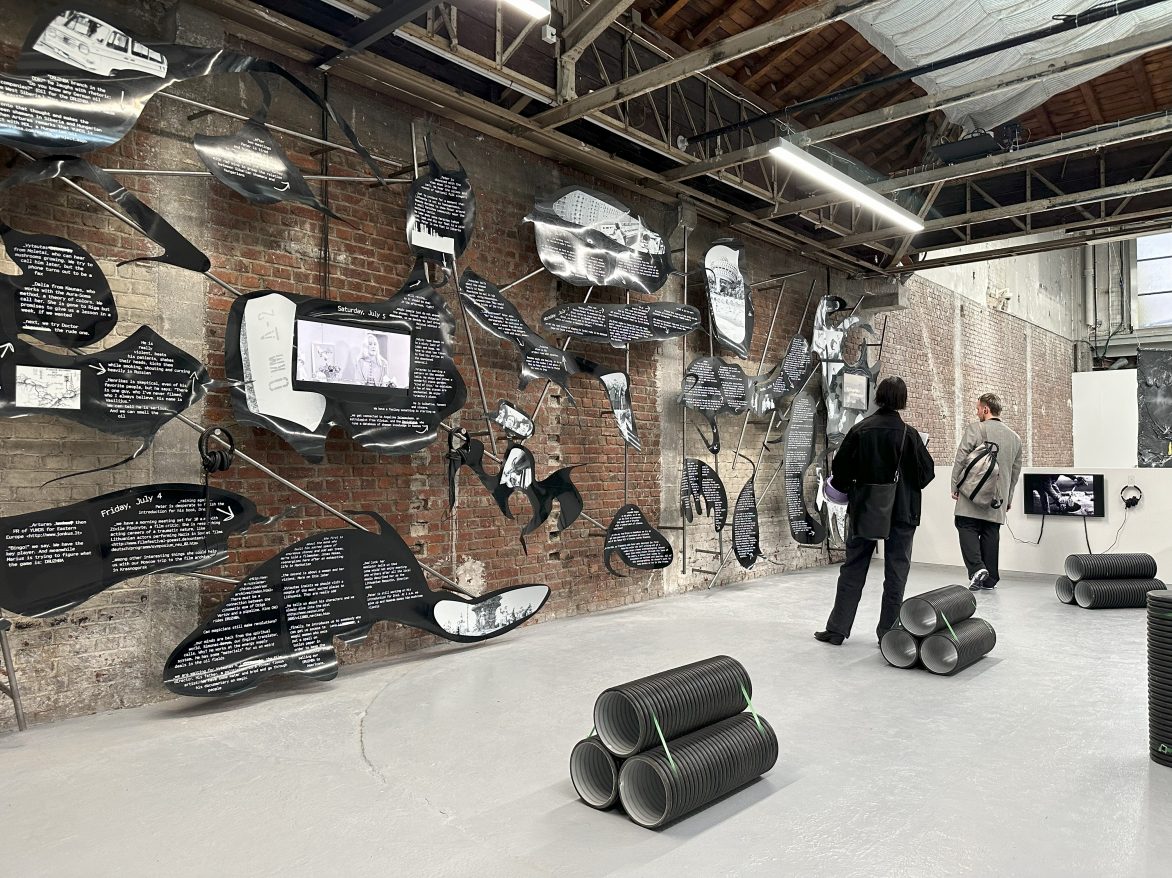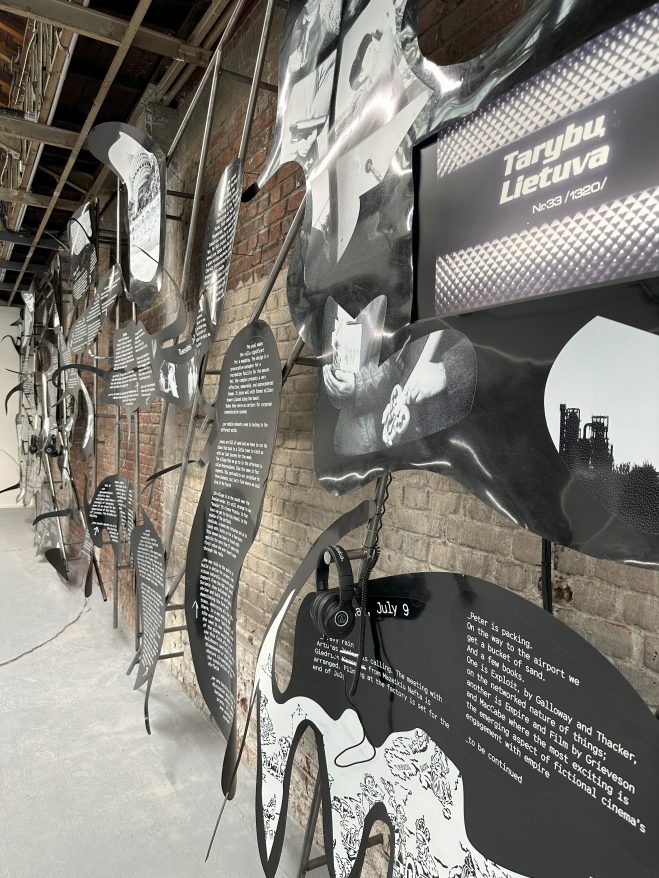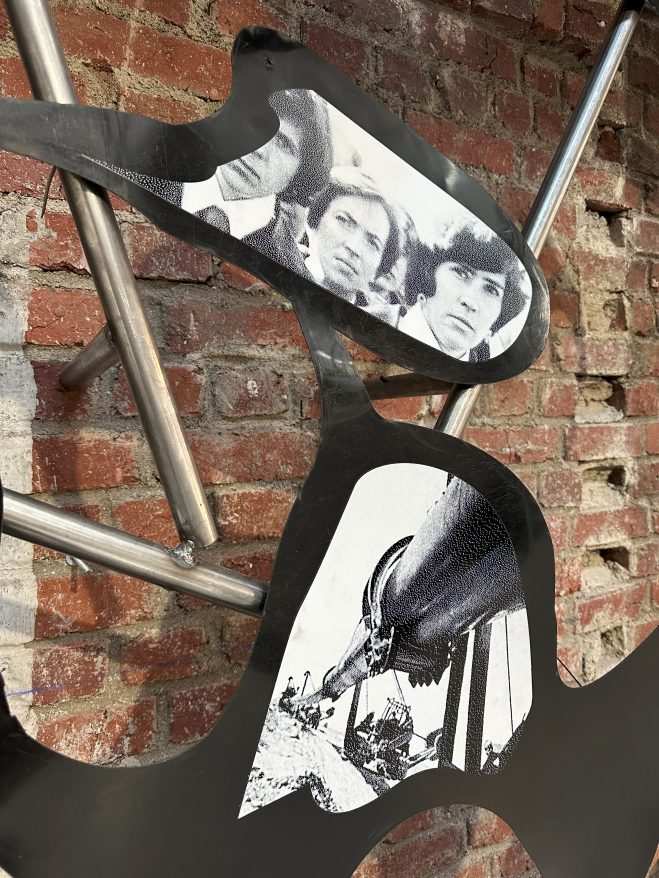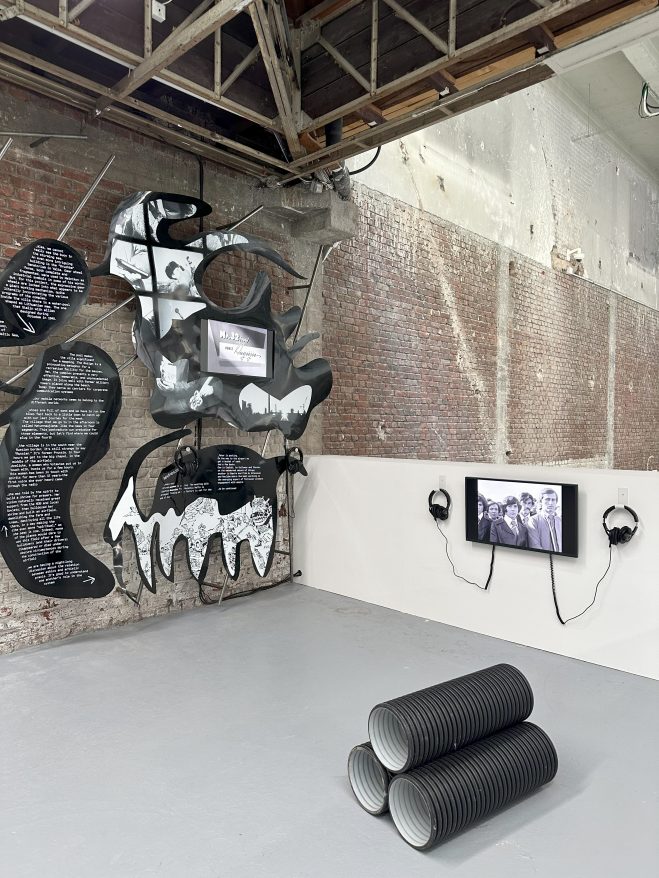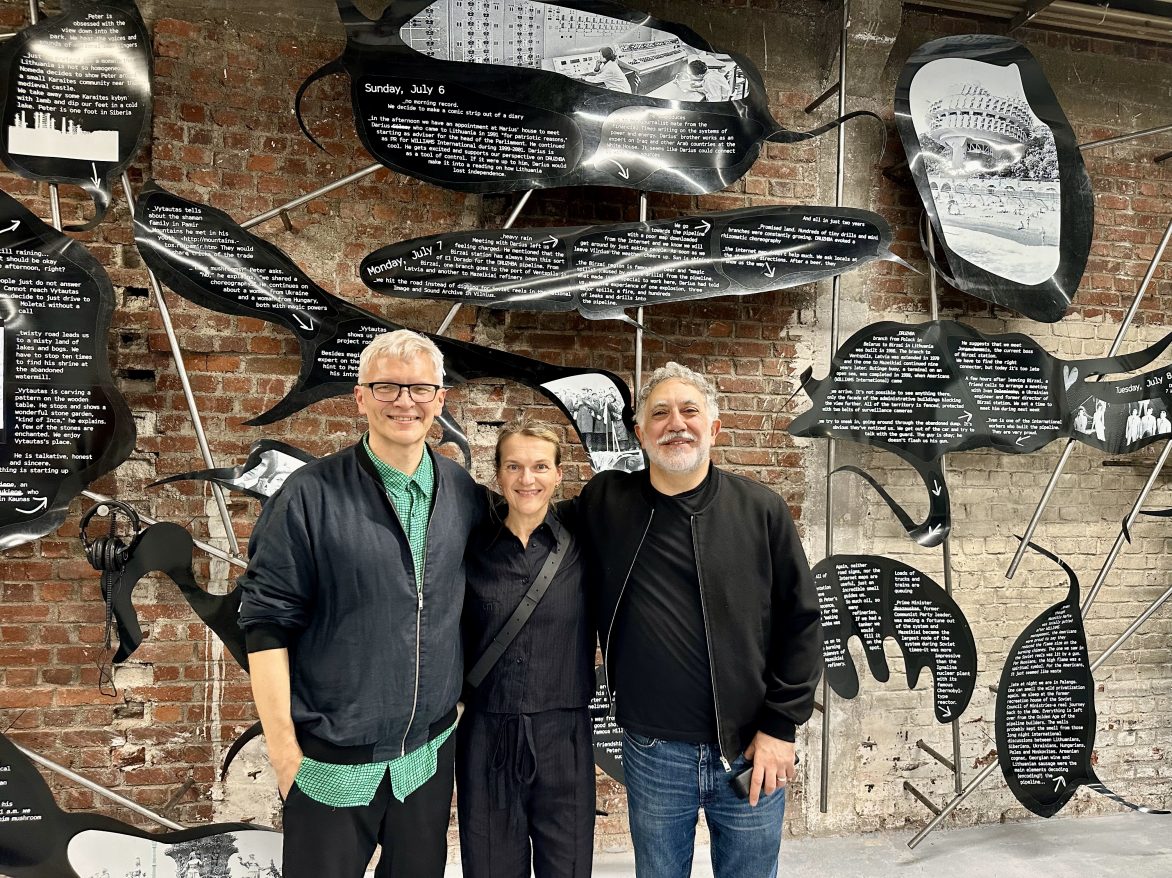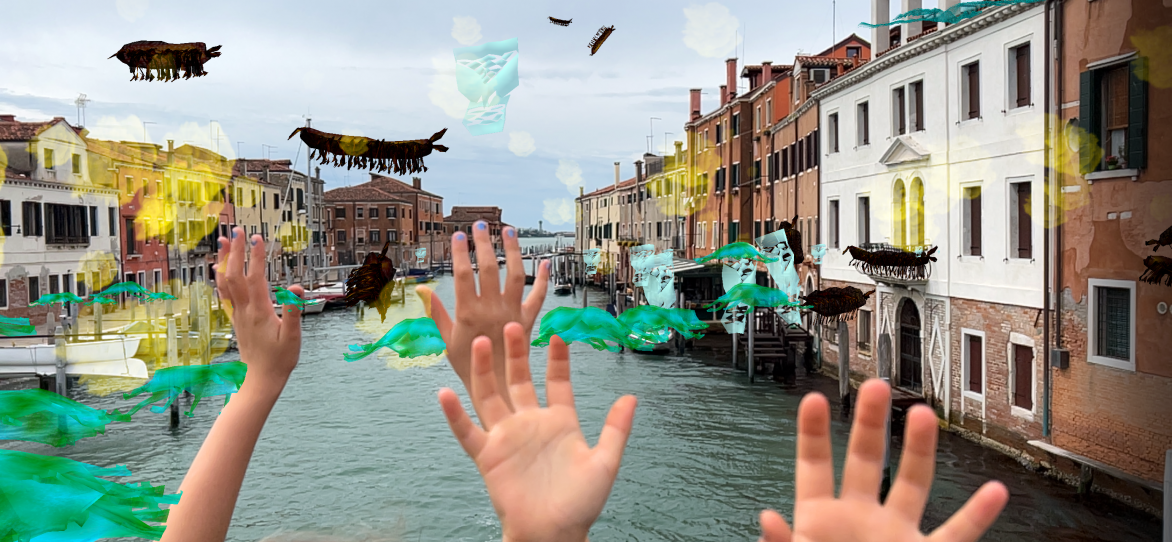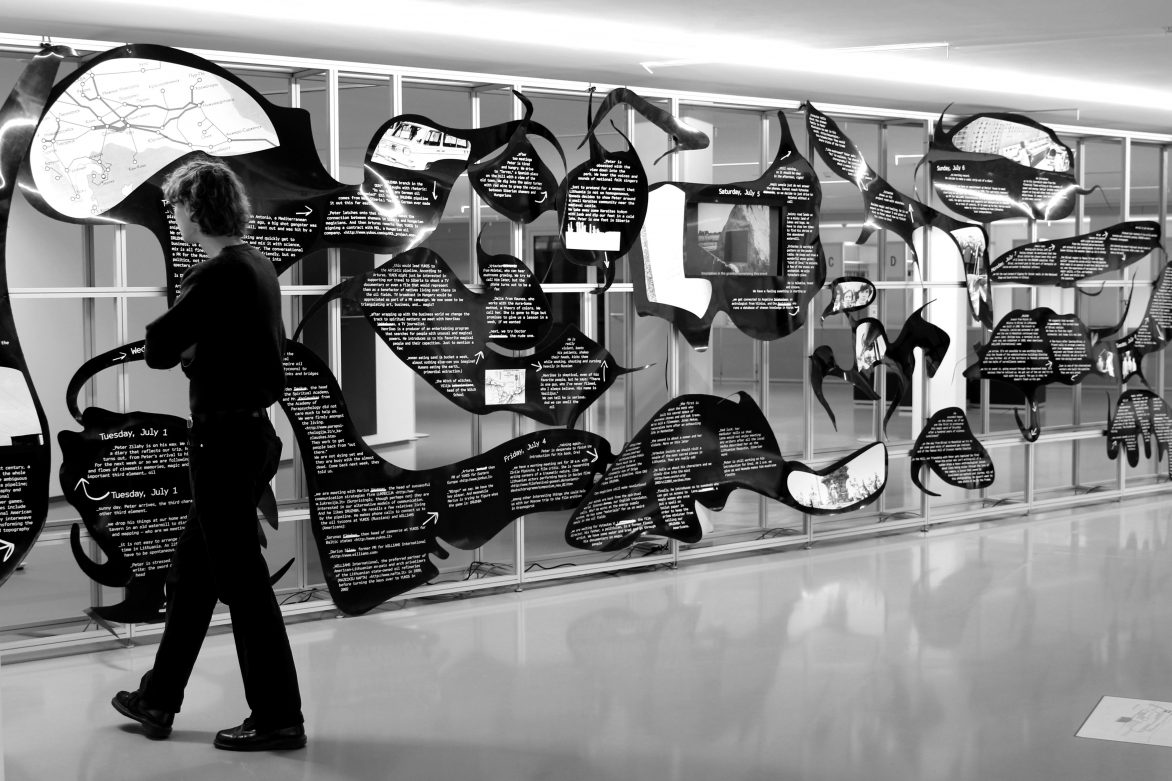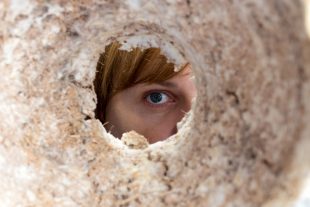October 11, 2024 – February 5, 2025
Gediminas Urbonas, associate professor MIT
Nomeda Urbonas, MIT research affiliate
Nomeda & Gediminas Urbonas/Urbonas Studio exhibit their project Druzhba (2003-ongoing), installed in two parts at Palais de Tokyo and at Kadist in Paris. Both parts present research-based exploration of the cultural, political, and geographical territories that unfold in a fictional journey along the world’s longest crude oil pipeline, 4,000 kilometers from Siberia, through Ukraine and Belarus to the Baltic States, Poland, Germany and other European countries. “Druzhba,” or “friendship” in Russian, is a master signifier, a grand-narrating, imperial structure meant at its inception in 1960 to “lead the world into a new dawn.” The project’s psycho-geographic readings reveal mechanisms of power, colonization and submission that rightfully belong to the past but still persist today revealing a complex net of invisible energy and thus other dependencies hidden beneath the earth and under false promises of friendship.
Conceived in a form of an installation and adapted to the space the version of the work at the Palais de Tokyo is an archival fabulation narrated in the form of a diary dispersed throughout the installation, in dialogue with Lacaton & Vassal design, which exposes the raw and industrial materiality of the building’s architecture.
The pipeline is known from the images of the maps that show its branching, from media reports celebrating its new installments, its proposed expansions, its refinery openings and closings, the pumping stations, and settlements of the oil industries. The installation highlights the flows and energies produced by a disintegrating colonial infrastructure. It links the distorted and pressurized story of the Druzhba pipeline to the psyche of the decaying empire, that until today is struggling to bridge the past with the present.
Kadist Paris:
The second part of the project exhibited at Kadist in Paris was originally conceived in dialogue with Nataša Petrešin-Bachelez for the Lyon Biennial in 2007, curated by Hans Ulrich Obrist. It presents an enlarged geopolitical cartoon map of Europe of the XIX century depicting power dynamics in the continent at the time. Executed in a special technique devised by the artists, a copy of the etching is applied on a wall in a thick layer of black tar punctuating persisting intricate interconnections of the biggest players of the region. The installation is accompanied by a moving image showing three men singing a folk song while being encircled by dancing masks of Mardi Gras. This slowed down found footage excavated by the artists at the Lithuanian Central State Archive indicates tangly ways of imperialist domination based on distorted visions of national identity.
Installation architecture in collaboration with Jurga Daubaraitė and Jonas Žukauskas, graphic design in collaboration with Gaile Pranckūnaitė and Marek Voida.
The Druzhba project (2003-ongoing) is part of the exhibition “Borders are nocturnal animals / Les Frontières sont des animaux nocturnes / Sienos yra naktiniai gyvūnai”, a project co-organized by Kadist Paris, the Palais de Tokyo and the Contemporary Art Centre in Vilnius. Curated by Neringa Bumblienė (CAC Vilnius curator) & Émilie Villez (Kadist advisor) and presented at Kadist and Palais de Tokyo in Paris the project is part of the Season of Lithuania in France 2024.
Caption for above images: Nomeda & Gediminas Urbonas, Druzhba (2003-ongoing). Installation. High-performance plastic, UV print, Archival footage. Graphic design and architecture in collaboration with Gaile Pranckūnaitė, Marek Voida, Jurga Daubaraitė and Jonas Žukauskas. Palais de Tokyo, 2024. Photo: Urbonas Studio.
The exhibition Borders are Nocturnal Animals presents intergenerational Lithuanian artists together with a collective of cultural workers from “post-socialist” countries, some now based in Western Europe and the US. It stems from the present geopolitical turmoil caused by the Russian war in Ukraine. Two years after the full-scale invasion started, what normality is possible in the vicinity of the conflict, while we witness history tending to repeat itself? The exhibition points at stories of that region that until recently were overshadowed by power discourses both from the East and the West. Once told, can they reshape established narratives of the past and the present?
The exhibition focuses on the threat of invasion, the haunting ghost of the past occupation, and persistent systems of beliefs and languages that carry resilience. Simultaneously presented at the Palais de Tokyo and Kadist through different artworks, the common group of artists uses imagination, poetry, and ancestral wisdom as political tools, as well as more factual approaches to read through complex colonial histories, realities, and envision the future.
The title is a reference to Luba Jurgenson’s essay, When we woke up. The Night of 24 February 2022: Invasion of Ukraine (Verdier, 2023): “Borders are nocturnal animals, they move while we sleep. We should always be vigilant.”

